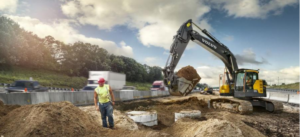Full Lifecycle Benefit-Cost Analysis Factors for Effective Infrastructure Investing
In collaboration with industry experts and academic advisors, OnTrackNorthAmerica has taken the first step towards development of a new, comprehensive list of costs and benefits. Note that this broader set of factors address stakeholder concerns that otherwise result in costly delays during project development.

This list of factors establishes a framework for project conception and design—to be utilized by relevant stakeholders and experts, who together will weigh and compare each factor.
Labor Costs. The cost of labor needed to build the project.
Materials Costs. Costs of construction materials, not including land acquisition.
Materials Lifecycle Impacts. Impacts of sourcing and transporting construction materials.
Contractor. Costs of the entities or companies that plan, engineer, finance, and build new infrastructure. This may include the labor and materials.
Existing rights-of-way. Are there existing or legacy rights of way for building the new transportation infrastructure?
Right-of-way. If there are not existing rights-of-way, then the land and rights-of-way needed for new transportation infrastructure must be purchased.
Energy. Cost of fuel or energy used to transport goods and people (diesel, gasoline, electricity, natural gas, etc).
Energy Lifecycle Impacts. Impacts of sourcing and distributing the energy used to transport goods and people.
Maintenance. Cost of maintenance required to keep freight and passenger transportation viable and safe.
Transport Equipment. The cost of acquisition of trucks, locomotives, containers, rail cars, etc.
Useful Life of Transport Equipment. Estimated life of transportation equipment, ie., trucks, railcars, locomotives, containers.
Useful Life of the Transportation Asset. Estimated life of steel rails, ties, or asphalt, concrete, etc.
End of Life Asset Value or Cost of Disposal.
Criteria Pollutants. A set of air pollutants that cause smog, acid rain, and other health hazards.
Greenhouse Gases. Emissions from the operation and maintenance of transport infrastructure that contribute to climate change.
Noise. The impact of noise on quality of life for areas abutting infrastructure including engine, rolling stock, and aerodynamics.
Water Quality. Impact of vehicle and fuel contamination on adjacent wildlife and natural environment.
Light Pollution. Impact of light for transportation on a community or on wildlife and the natural environment.
Toxic releases. Accidental and non-accidental releases of transported hazardous materials.
Non-Reoccurring Travel Congestion. Collective time loss caused by accidents.
Reoccurring Travel Congestion. Collective time loss caused by capacity limits — in other words: traffic jams.
Land Use and Spatial Efficiency. Freight capacity gained in relation to the value of the land utilized for proposed expansion project.
Safety. Fatalities and injuries per ton-mile of freight.
Safety to the Transportation Providers. On-the-job fatalities and injury rate.
Short-Term Economic Impact. Local economic impact from job creation and other benefits due to construction of transport infrastructure.
Property Tax Impact. Added or lost property tax due to transport construction.
Local and Regional Development. Multiplier effect of transport infrastructure capacity on area economic and industrial development.
Impacts of Shipping Costs and Methods on the Local Economy. How each mode and the overall cost of shipping impact local economy.
Overall capacity and speed of freight system (mobility) The system’s overall volume and velocity of freight movement.
Connectivity Does the project connect to intermodal options or encourage future intermodal possibilities, and therefore access to a wider competitive network?
Accessibility Is the mode usable to shippers of all business sizes? Can a shipment be made easily, such as a single contact and intermodal collaboration providing door-to-door service?
Circuitry Will the total menu of shipping options be plentiful or restricted? Is the proposed project likely to add more layers of redundant services? Will it fortify the region’s freight movement resiliency?
Reliability How capable is the mode of hitting delivery schedule targets? What is the track record of each mode’s ability to offer shipment secure from pilferage and damage.
